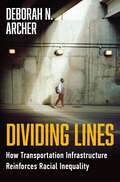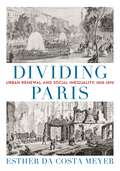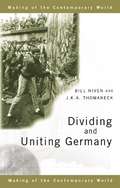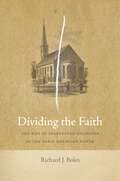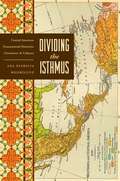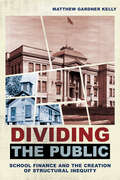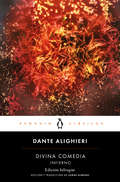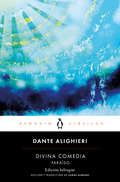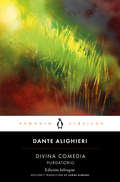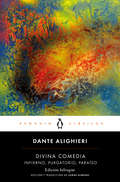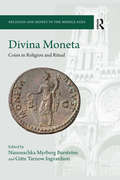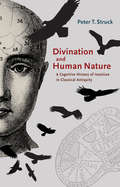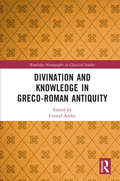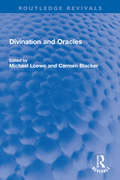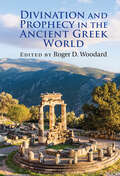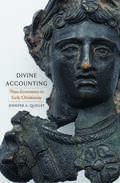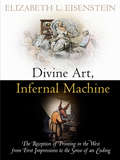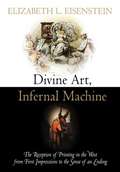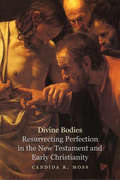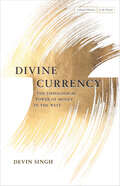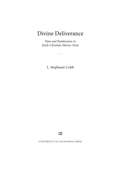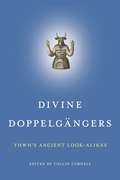- Table View
- List View
Dividing Lines: How Transportation Infrastructure Reinforces Racial Inequality
by Deborah N. ArcherFrom an eminent legal scholar and the president of the ACLU, an essential account of how transportation infrastructure—from highways and roads to sidewalks and buses—became a means of protecting segregation and inequality after the fall of Jim Crow. Our nation’s transportation system is crumbling: highways are collapsing, roads are pockmarked, and commuter trains are unreliable. But as acclaimed scholar and ACLU president Deborah Archer warns in Dividing Lines, before we can think about rebuilding and repairing, we must consider the role race has played in transportation infrastructure, from the early twentieth century and into the present day. As Archer demonstrates, the success of the Civil Rights movement and the fall of Jim Crow in the 1960s did not mean the end of segregation. The status quo would not be so easily dismantled. With state-sanctioned racism no longer legal, officials across the country—not just in the South—turned to transportation infrastructure to keep Americans divided. A wealthy white neighborhood could no longer be "protected" by racial covenants and segregated shops, but a multilane road, with no pedestrian crossings, could be built along its border to make it difficult for people from a lower-income community to visit. Highways could not be routed through Black neighborhoods based on the race of their residents, but those neighborhoods’ lower property values—a legacy of racial exclusion—could justify their destruction. A new suburb could not be for "whites only," but planners could refuse to extend sidewalks from Black communities into white ones. Drawing on a wealth of sources, including interviews with people who now live in the shadow of highways and other major infrastructure projects, Archer presents a sweeping, national account—from Atlanta and Houston to Indianapolis and New York City—of our persistent divisions. With immense authority, she examines the limits of current Civil Rights laws, which can be used against overtly racist officials but are less effective in addressing deeper, more enduring, structural challenges. But Archer remains hopeful, and in the final count describes what a just system would look like and how we can achieve it.
Dividing Paris: Urban Renewal and Social Inequality, 1852–1870
by Esther da Costa MeyerA groundbreaking work of scholarship that sheds critical new light on the urban renewal of Paris under Napoleon IIIIn the mid-nineteenth century, Napoleon III and his prefect, Georges-Eugène Haussmann, adapted Paris to the requirements of industrial capitalism, endowing the old city with elegant boulevards, an enhanced water supply, modern sewers, and public greenery. Esther da Costa Meyer provides a major reassessment of this ambitious project, which resulted in widespread destruction in the historic center, displacing thousands of poor residents and polarizing the urban fabric.Drawing on newspapers, memoirs, and other archival materials, da Costa Meyer explores how people from different social strata—both women and men—experienced the urban reforms implemented by the Second Empire. As hundreds of tenements were destroyed to make way for upscale apartment buildings, thousands of impoverished residents were forced to the periphery, which lacked the services enjoyed by wealthier parts of the city. Challenging the idea of Paris as the capital of modernity, da Costa Meyer shows how the city was the hub of a sprawling colonial empire extending from the Caribbean to Asia, and exposes the underlying violence that enriched it at the expense of overseas territories.This marvelously illustrated book brings to light the contributions of those who actually built and maintained the impressive infrastructure of Paris, and reveals the consequences of colonial practices for the city's cultural, economic, and political life.
Dividing and Uniting Germany (The Making of the Contemporary World)
by Bill Niven J. K. ThomaneckA concise introduction to the process which led to the division of Germany in 1949, and its unification in 1990, this book also explores the economic, social and cultural divisions between and east and west, which still exist in post-unification Germany. Dividing and Uniting Germany covers all important aspects of the subject including: the role of the allies in the post-war division of the country the integration of West and East Germany into their respective blocs the problems of integrating east and west after 1990 Germany's Nazi and socialist past.
Dividing the Faith: The Rise of Segregated Churches in the Early American North (Early American Places #17)
by Richard J BolesUncovers the often overlooked participation of African Americans and Native Americans in early Protestant churchesPhillis Wheatley was stolen from her family in Senegambia, and, in 1761, slave traders transported her to Boston, Massachusetts, to be sold. She was purchased by the Wheatley family who treated Phillis far better than most eighteenth-century slaves could hope, and she received a thorough education while still, of course, longing for her freedom. After four years, Wheatley began writing religious poetry. She was baptized and became a member of a predominantly white Congregational church in Boston. More than ten years after her enslavement began, some of her poetry was published in London, England, as a book titled Poems on Various Subjects, Religious and Moral. This book is evidence that her experience of enslavement was exceptional. Wheatley remains the most famous black Christian of the colonial era. Though her experiences and accomplishments were unique, her religious affiliation with a predominantly white church was quite ordinary. Dividing the Faith argues that, contrary to the traditional scholarly consensus, a significant portion of northern Protestants worshipped in interracial contexts during the eighteenth century. Yet in another fifty years, such an affiliation would become increasingly rare as churches were by-and-large segregated.Richard Boles draws from the records of over four hundred congregations to scrutinize the factors that made different Christian traditions either accessible or inaccessible to African American and American Indian peoples. By including Indians, Afro-Indians, and black people in the study of race and religion in the North, this research breaks new ground and uses patterns of church participation to illuminate broader social histories. Overall, it explains the dynamic history of racial integration and segregation in northern colonies and states.
Dividing the Isthmus: Central American Transnational Histories, Literatures, and Cultures
by Ana Patricia RodríguezIn 1899, the United Fruit Company (UFCO) was officially incorporated in Boston, Massachusetts, beginning an era of economic, diplomatic, and military interventions in Central America. This event marked the inception of the struggle for economic, political, and cultural autonomy in Central America as well as an era of home-grown inequities, injustices, and impunities to which Central Americans have responded in creative and critical ways. This juncture also set the conditions for the creation of the Transisthmus - a material, cultural, and symbolic site of vast intersections of people, products, and narratives. Taking 1899 as her point of departure, Ana Patricia Rodriguez offers a comprehensive, comparative, and meticulously researched book covering more than one hundred years, between 1899 and 2007, of modern cultural and literary production and modern empire-building in Central America. She examines the grand narratives of (anti)imperialism, revolution, subalternity, globalization, impunity, transnational migration, and diaspora, as well as other discursive, historical, and material configurations of the region beyond its geophysical and political confines. Focusing in particular on how the material productions and symbolic tropes of cacao, coffee, indigo, bananas, canals, waste, and transmigrant labor have shaped the transisthmian cultural and literary imaginaries, Rodriguez develops new methodological approaches for studying cultural production in Central America and its diasporas. Monumental in scope and relentlessly impassioned, this work offers new critical readings of Central American narratives and contributes to the growing field of Central American studies.
Dividing the Public: School Finance and the Creation of Structural Inequity (Histories of American Education)
by Matthew Gardner KellyIn Dividing the Public, Matthew Gardner Kelly takes aim at the racial and economic disparities that characterize public education funding in the United States. With California as his focus, Kelly illustrates that the use of local taxes to fund public education was never an inadvertent or de facto product of past practices, but an intentional decision adopted in place of well-known alternatives during the Progressive Era, against past precedent and principle in several states.From efforts to convert expropriated Indigenous and Mexican land into common school funding in the 1850s, to reforms that directed state aid to expanding white suburbs during the years surrounding World War II, Dividing the Public traces, in intricate detail, how a host of policies connected to school funding have divided California by race and class over time. In bringing into view the neglected and poorly understood history of policymaking connected to school finance, Kelly offers a new story about the role public education played in shaping the racially segregated, economically divided, and politically fragmented world of the post-1945 metropolis.
Divina Comedia. Infierno: Primera Parte: Infierno (Illustrated By Dore Ser. #No. 49)
by Dante AlighieriNueva edición bilingüe del Infierno, con introducción general, prólogo, traducción y notas del poeta español Jorge Gimeno En el Infierno, primero de los tres volúmenes que componen la Divina Comedia, Dante relata su viaje al inframundo desde el encuentro fortuito con su guía, el poeta latino Virgilio, hasta el avistamiento de Lucifer en el fondo del abismo. Viaje simbólico por el alma humana, su recorrido es un inolvidable catálogo de los pecadores que merecen la pena eterna según la escatología medieval. Pero su visión poética trasciende también el tiempo y, con sus horrores, alumbra la edad moderna que en parte ayudó a crear. La presente edición, a cargo del poeta españo Jorge Gimeno, incluye el texto original, una soberbia traducción en endecasílabos, una introducción general, un prólogo y un iluminador aparato de notas.
Divina Comedia. Paraíso (edición bilingüe)
by Dante AlighieriNueva edición bilingüe del Paraíso, con prólogo, traducción y notas del poeta español Jorge Gimeno En el Paraíso, último volumen y culminación necesaria de la Comedia, Dante asciende a los cielos y consigue lo impensable: alcanzar el Empíreo, el no lugar y no tiempo de la presencia divina, para regresar a la tierra y contarlo. El sentido último del libro no es otro que místico, y los versos finales del poema se resuelven en la divinidad. Pero Dante se eleva en esta cántica también hasta la más alta expresión de su poesía, un estilo sacro, elevado, inimitable e irremplazable, que resume su destino literario. La presente edición, a cargo del poeta español Jorge Gimeno, incluye el texto original, una soberbia traducción en endecasílabos, un prólogo y un iluminador aparato de notas.
Divina Comedia. Pugatorio (Illustrated By Dore Ser.)
by Dante AlighieriNueva edición bilingüe del Purgatorio, con introducción general, prólogo, traducción y notas del poeta español Jorge Gimeno El Purgatorio es la cántica del cambio, el paso de Dante por el reino en que las almas, mediante sus padecimientos y la oración de los vivos, conquistan la salvación que ya han obtenido. Pero no menos importante es el aprendizaje del poeta, que amplía su conocimiento de la realidad verdadera a través de las revelaciones del camino. Tras un viaje entre lo velado y lo desvelado, lo que es y lo que no es, Dante se reencontrará con Beatriz y se dirigirá de su mano al bien supremo, un poco más dueño de su destino. La presente edición, a cargo del poeta español Jorge Gimeno, incluye el texto original, una soberbia traducción en endecasílabos, un prólogo y un iluminador aparato de notas.
Divina Comedia: Infierno | Purgatorio | Paraíso (edición bilingüe)
by Dante AlighieriUn estupendo estuche con los tres volúmenes de la Divina Comedia, en una nueva edición y traducción de Jorge Gimeno. La Divina Comedia relata el viaje de Dante Alighieri por el infierno, el purgatorio y el paraíso en tres grandes cánticas. En el Infierno, el gran poeta italiano relata su viaje al inframundo desde el encuentro fortuito con su guía, el poeta latino Virgilio, hasta el avistamiento de Lucifer en el fondo del abismo. Viaje simbólico por el alma humana, su recorrido es un inolvidable catálogo de los pecadores que merecen la pena eterna según la escatología medieval. Sin embargo, su visión poética trasciende también el tiempo y, en sus horrores, alumbra la edad moderna que en parte ayudó a crear. El Purgatorio es la cántica del cambio, el paso del poeta por el reino en que las almas, mediante sus padecimientos y la oración de los vivos, conquistan la salvación que ya han obtenido. Pero no menos importa el aprendizaje del poeta, que amplía su conocimiento de la realidad verdadera a través de las revelaciones que le ofrece el camino. Tras un viaje entre lo velado y lo desvelado, lo que es y lo que no es, Dante se reencontrará con Beatriz y se dirigirá de su mano al bien supremo, ya un poco más dueño de su destino. En el Paraíso, culminación necesaria de la Comedia, Dante asciende a los cielos y consigue lo impensable: alcanzar el Empíreo, el no lugar y no tiempo de la presencia divina, para luego regresar a la tierra y contarlo. El sentido último del libro no es otro que místico, y los versos finales del poema se resuelven en la divinidad. Pero Dante se eleva en esta cántica también hasta la más alta expresión de su poesía, un estilo sacro, inimitable e irremplazable, que resume su destino literario. La presente edición, a cargo del poeta español Jorge Gimeno, incluye el texto original, una soberbia traducción en endecasílabos, una introducción general, un prólogo y un iluminador aparato de notas.
Divina Moneta: Coins in Religion and Ritual (Religion and Money in the Middle Ages)
by Nanouschka Myrberg Burström Gitte Tarnow IngvardsonThis edited collection analyses the phenomenon of coin use for religious and ritual purposes in different cultures and across different periods of time. It proposes an engagement with the theory and interpretation of the ‘material turn’ with numismatic evidence, and an evidence-based series of discussions to offer a fuller, richer and fresh account of coin use in ritual contexts. No extensive publication has previously foregrounded coins in such a model, despite the fact that coins constitute an integrated part of the material culture of most societies today and of many in the past. Here, interdisciplinary discussions are organised around three themes: coin deposit and ritual practice, the coin as economic object and divine mediator, and the value and meaning of coin offering. Although focusing on the medieval period in Western Europe, the book includes instructive cases from the Roman period until today. The collection brings together well-established and emerging scholars from archaeology, art history, ethnology, history and numismatics, and great weight is given to material evidence which can complement and contradict the scarce written sources.
Divination and Human Nature: A Cognitive History of Intuition in Classical Antiquity
by Peter T. StruckDivination and Human Nature casts a new perspective on the rich tradition of ancient divination--the reading of divine signs in oracles, omens, and dreams. Popular attitudes during classical antiquity saw these readings as signs from the gods while modern scholars have treated such beliefs as primitive superstitions. In this book, Peter Struck reveals instead that such phenomena provoked an entirely different accounting from the ancient philosophers. These philosophers produced subtle studies into what was an odd but observable fact--that humans could sometimes have uncanny insights--and their work signifies an early chapter in the cognitive history of intuition.Examining the writings of Plato, Aristotle, the Stoics, and the Neoplatonists, Struck demonstrates that they all observed how, setting aside the charlatans and swindlers, some people had premonitions defying the typical bounds of rationality. Given the wide differences among these ancient thinkers, Struck notes that they converged on seeing this surplus insight as an artifact of human nature, projections produced under specific conditions by our physiology. For the philosophers, such unexplained insights invited a speculative search for an alternative and more naturalistic system of cognition.Recovering a lost piece of an ancient tradition, Divination and Human Nature illustrates how philosophers of the classical era interpreted the phenomena of divination as a practice closer to intuition and instinct than magic.
Divination and Knowledge in Greco-Roman Antiquity (Routledge Monographs in Classical Studies)
by Crystal AddeyAddressing the close connections between ancient divination and knowledge, this volume offers an interlinked and detailed set of case studies which examine the epistemic value and significance of divination in ancient Greek and Roman cultures. Focusing on diverse types of divination, including oracles, astrology, and the reading of omens and signs in the entrails of sacrificial animals, chance utterances and other earthly and celestial phenomena, this volume reveals that divination was conceived of as a significant path to the attainment of insight and understanding by the ancient Greeks and Romans. It also explores the connections between divination and other branches of knowledge in Greco-Roman antiquity, such as medicine and ethnographic discourse. Drawing on anthropological studies of contemporary divination and exploring a wide range of ancient philosophical, historical, technical and literary evidence, chapters focus on the interconnections and close relationship between divine and human modes of knowledge, in relation to nuanced and subtle formulations of the blending of divine, cosmic and human agency; philosophical approaches towards and uses of divination (particularly within Platonism), including links between divination and time, ethics, and cosmology; and the relationship between divination and cultural discourses focusing on gender. The volume aims to catalyse new questions and approaches relating to these under-investigated areas of ancient Greek and Roman life. which have significant implications for the ways in which we understand and assess ancient Greek and Roman conceptions of epistemic value and variant ways of knowing, ancient philosophy and intellectual culture, lived, daily experience in the ancient world, and religious and ritual traditions. Divination and Knowledge in Greco-Roman Antiquity will be of particular relevance to researchers and students in classics, ancient history, ancient philosophy, religious studies and anthropology who are working on divination, lived religion and intellectual culture, but will also appeal to general readers who are interested in the widespread practice and significance of divination in the ancient world.
Divination and Oracles (Routledge Revivals)
by Michael Loewe; Carmen BlackerFirst published in 1981, Divination and Oracles analyses the religious practices of the ancient world as they have been witnessed from Scandinavia to Tibet and Japan, from the third millennium BC until the present day. Divination and the consultation of oracles formed part of the religious practice of the ancient world and are part of the living folklore of the contemporary societies. They are subjects that are of immediate concern to anthropologists and not infrequently to the historians of early science. Written by the specialists in the early history of European and Asian Civilisations, the chapters call on the evidence of the written word of history and the surviving artefacts and inscriptions of archaeology. They describe the different methods that have been adopted and examine the types of question that feature in man’s attempt to seek guidance from other powers. The contributions show how an appeal to the irrational can affect the decision of prophet or statesman, or the way of life of farmer or sailor; and how such an appeal can also stimulate scientific enquiry into the cycles of nature. This book is a must read for scholars and researchers of religion, comparative religion, and ancient history.
Divination and Prediction in Early China and Ancient Greece
by Lisa RaphalsDivination was an important and distinctive aspect of religion in both ancient China and ancient Greece, and this book will provide the first systematic account and analysis of the two side by side. Who practised divination in these cultures and who consulted it? What kind of questions did they ask, and what methods were used to answer those questions? As well as these practical aspects, Lisa Raphals also examines divination as a subject of rhetorical and political narratives, and its role in the development of systematic philosophical and scientific inquiry. She explores too the important similarities, differences and synergies between Greek and Chinese divinatory systems, providing important comparative evidence to reassess Greek oracular divination.
Divination and Prophecy in the Ancient Greek World
by Roger D. WoodardThis volume examines the phenomena of ancient Greek prophecy and divination. With contributions from a distinguished, international cast of scholars, it offers fresh perspectives and interpretations of key aspects of these practices. Considering issues such as comparativism, ethnography, cognitive function, orality, and intertextuality, the volume demonstrates their relevance to the elucidation of Greek prophetic practices. The volume also shows how multi- and inter-disciplinary approaches can be applied to a range of topics, from an examination of the very inception of Greek divination, explored within the frame of more archaic cult ideas, through emic elaboration of divinatory practice in Archaic and Classical periods, to consideration of intentional manipulation of prophecy, as depicted in Hellenistic and Imperial Roman sources. Collectively, the essays deepen our understanding of ancient Greek prophecy by offering insights into divinition astéhknē, the centrality or marginality of Delphi and the Pythic priestess, prophetic ambiguity, and cognition, including cognitive dissonance.
Divination, Prediction and the End of the Roman Republic
by Federico SantangeloThis book offers a comprehensive assessment of the intersection between Roman politics, culture and divination in the late Republic. It discusses how the practice of divination changed at a time of great political and social change and explores the evidence for a critical reflection and debate on the limits of divination and prediction in the second and first centuries BC. Divination was a central feature in the workings of the Roman government and this book explores the ways in which it changed under the pressure of factors of socio-political complexity and disruption. It discusses the ways in which the problem of the prediction of the future is constructed in the literature of the period. Finally, it explores the impact that the emergence of the Augustan regime had on the place of divination in Rome and the role that divinatory themes had in shaping the ideology of the new regime.
Divine Accounting: Theo-Economics in Early Christianity (Synkrisis)
by Jennifer A QuigleyA nuanced narrative about the intersections of religious and economic life in early Christianity The divine was an active participant in the economic spheres of the ancient Mediterranean world. Evidence demonstrates that gods and goddesses were represented as owning goods, holding accounts, and producing wealth through the mediation of religious and civic officials. This book argues that early Christ-followers also used financial language to articulate and imagine their relationship to the divine. Theo-economics—intertwined theological and economic logics in which divine and human beings regularly transact with one another—permeate the letters of Paul and other texts connected with Pauline communities. Unlike other studies, which treat the ancient economy and religion separately, Divine Accounting takes seriously the overlapping of themes such as poverty, labor, social status, suffering, cosmology, and eschatology in material evidence from the ancient Mediterranean and early Christian texts.
Divine Art, Infernal Machine
by Elizabeth L. EisensteinThere is a longstanding confusion of Johann Fust, Gutenberg's one-time business partner, with the notorious Doctor Faustus. The association is not surprising to Elizabeth L. Eisenstein, for from its very early days the printing press was viewed by some as black magic. For the most part, however, it was welcomed as a "divine art" by Western churchmen and statesmen. Sixteenth-century Lutherans hailed it for emancipating Germans from papal rule, and seventeenth-century English radicals viewed it as a weapon against bishops and kings. While an early colonial governor of Virginia thanked God for the absence of printing in his colony, a century later, revolutionaries on both sides of the Atlantic paid tribute to Gutenberg for setting in motion an irreversible movement that undermined the rule of priests and kings. Yet scholars continued to praise printing as a peaceful art. They celebrated the advancement of learning while expressing concern about information overload.In Divine Art, Infernal Machine, Eisenstein, author of the hugely influential The Printing Press as an Agent of Change, has written a magisterial and highly readable account of five centuries of ambivalent attitudes toward printing and printers. Once again, she makes a compelling case for the ways in which technological developments and cultural shifts are intimately related. Always keeping an eye on the present, she recalls how, in the nineteenth century, the steam press was seen both as a giant engine of progress and as signaling the end of a golden age. Predictions that the newspaper would supersede the book proved to be false, and Eisenstein is equally skeptical of pronouncements of the supersession of print by the digital.The use of print has always entailed ambivalence about serving the muses as opposed to profiting from the marketing of commodities. Somewhat newer is the tension between the perceived need to preserve an ever-increasing mass of texts against the very real space and resource constraints of bricks-and-mortar libraries. Whatever the multimedia future may hold, Eisenstein notes, our attitudes toward print will never be monolithic. For now, however, reports of its death are greatly exaggerated.
Divine Art, Infernal Machine: The Reception of Printing in the West from First Impressions to the Sense of an Ending
by Elizabeth L. EisensteinThe author has written a magisterial and highly readable account of five centuries of ambivalent attitudes toward printing and printers. Once again, she makes a compelling case for the ways in which technological developments and cultural shifts are intimately related.
Divine Bodies: Resurrecting Perfection in the New Testament and Early Christianity
by Candida R. MossA path‑breaking scholar’s insightful reexamination of the resurrection of the body and the construction of the self When people talk about the resurrection they often assume that the bodies in the afterlife will be perfect. But which version of our bodies gets resurrected—young or old, healthy or sick, real-to-life or idealized? What bodily qualities must be recast in heaven for a body to qualify as both ours and heavenly? The resurrection is one of the foundational statements of Christian theology, but when it comes to the New Testament only a handful of passages helps us answer the question “What will those bodies be like?” More problematically, the selection and interpretation of these texts are grounded in assumptions about the kinds of earthly bodies that are most desirable. Drawing upon previously unexplored evidence in ancient medicine, philosophy, and culture, this illuminating book both revisits central texts—such as the resurrection of Jesus—and mines virtually ignored passages in the Gospels to show how the resurrection of the body addresses larger questions about identity and the self.
Divine Currency: The Theological Power of Money in the West (Cultural Memory in the Present)
by Devin SinghThis book shows how early economic ideas structured Christian thought and society, giving crucial insight into why money holds such power in the West. Examining the religious and theological sources of money's power, it shows how early Christian thinkers borrowed ancient notions of money and economic exchange from the Roman Empire as a basis for their new theological arguments. Monetary metaphors and images, including the minting of coins and debt slavery, provided frameworks for theologians to explain what happens in salvation. God became an economic administrator, for instance, and Christ functioned as a currency to purchase humanity's freedom. Such ideas, in turn, provided models for pastors and Christian emperors as they oversaw both resources and people, which led to new economic conceptions of state administration of populations and conferred a godly aura on the use of money. Divine Currency argues that this longstanding association of money with divine activity has contributed over the centuries to money's ever increasing significance, justifying various forms of politics that manage citizens along the way. Devin Singh's account sheds unexpected light on why we live in a world where nothing seems immune from the price mechanism.
Divine Deliverance: Pain and Painlessness in Early Christian Martyr Texts
by L. Stephanie CobbDoes martyrdom hurt? The obvious answer to this question is "yes." L. Stephanie Cobb, asserts, however, that early Christian martyr texts respond to this question with an emphatic "no!" Divine Deliverance examines the original martyr texts of the second through fifth centuries, concluding that these narratives in fact seek to demonstrate the Christian martyrs' imperviousness to pain. For these martyrs, God was present with, and within, the martyrs, delivering them from pain. These martyrs' claims not to feel pain define and redefine Christianity in the ancient world: whereas Christians did not deny the reality of their subjection to state violence, they argued that they were not ultimately vulnerable to its painful effects.
Divine Doppelgängers: YHWH’s Ancient Look-Alikes
by Collin CornellThe Bible says that YHWH alone is God and that there is none like him—but texts and artwork from antiquity show that many gods looked very similar. In this volume, scholars of the Hebrew Bible and its historical contexts address the problem of YHWH’s ancient look-alikes, providing recommendations for how Jews and Christians can think theologically about this challenge.Sooner or later, whether in a religion class or a seminary course, students bump up against the fact that God—the biblical God—was one among other, comparable gods. The ancient world was full of gods, including great gods of conquering empires, dynastic gods of petty kingdoms, goddesses of fertility, and personal spirit guardians. And in various ways, these gods look like the biblical God. Like the God of the Bible, they, too, controlled the fates of nations, chose kings, bestowed fecundity and blessing, and cared for their individual human charges. They spoke and acted. They experienced wrath and delight. They inspired praise. All of this leaves Jews and Christians in a bind: how can they confess that the God named YHWH was (and is) the true and living God, in view of this God’s profound similarities to all these others?The essays in this volume address the theological challenge these parallels create, providing reflections on how Jews and Christians can keep faith in YHWH as God while acknowledging the reality of YHWH’s divine doppelgängers. It will be welcomed by undergraduates studying religion; seminarians and graduate students of Bible, theology, and the ancient world; and adult education classes.
Divine Doppelgängers: YHWH’s Ancient Look-Alikes
by Collin CornellThe Bible says that YHWH alone is God and that there is none like him—but texts and artwork from antiquity show that many gods looked very similar. In this volume, scholars of the Hebrew Bible and its historical contexts address the problem of YHWH’s ancient look-alikes, providing recommendations for how Jews and Christians can think theologically about this challenge.Sooner or later, whether in a religion class or a seminary course, students bump up against the fact that God—the biblical God—was one among other, comparable gods. The ancient world was full of gods, including great gods of conquering empires, dynastic gods of petty kingdoms, goddesses of fertility, and personal spirit guardians. And in various ways, these gods look like the biblical God. Like the God of the Bible, they, too, controlled the fates of nations, chose kings, bestowed fecundity and blessing, and cared for their individual human charges. They spoke and acted. They experienced wrath and delight. They inspired praise. All of this leaves Jews and Christians in a bind: how can they confess that the God named YHWH was (and is) the true and living God, in view of this God’s profound similarities to all these others?The essays in this volume address the theological challenge these parallels create, providing reflections on how Jews and Christians can keep faith in YHWH as God while acknowledging the reality of YHWH’s divine doppelgängers. It will be welcomed by undergraduates studying religion; seminarians and graduate students of Bible, theology, and the ancient world; and adult education classes.
